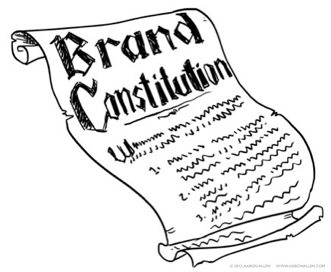The average restaurant spends between three to six percent of total revenue on marketing. While this is a generally acceptable amount, what’s often far less evident is where to invest these funds. This list could easily be a mile long, but here are a few of the most common restaurant marketing mistakes we see.

1. NEGLECTING BRAND STANDARDS
Lacking a brand promise, brand personality, brand positioning and brand story weakens a restaurant. People like narratives, not corporations – and good marketing and PR tells a brand’s story. Personality makes a brand much more personal, and a story gives a marketing campaign, PR materials and the entire restaurant a starting point to build around.
With a strong story, everything created contributes to the same message, providing customers with a unified face they can become acquainted with. Creating formalized brand standards helps humanize and personalize a restaurant and make it more relatable for guests. A brand promise is important for establishing a pact with visitors that you will provide consistent service and food. All are essential elements of any marketing campaign.
2. NO FORMAL PLANNING OR BUDGETING
Advertising should be based on a structured plan rather than on which sales reps did the best job. Develop a long-term plan with a set of comprehensive goals, then set a budget to plan the first campaign. Objectives should be realistic and measurable with clear standards and deadlines. Rather than setting a vague goal, such as “increasing brand awareness,” set quantified performance indicators such as “gaining 1,000 new Twitter followers each quarter.” Be sure to also track the impact that each marketing effort has on goals and profits.
What are the components of the campaign going to be? What are the goals the campaign is set to accomplish? When will the next campaign start? Are there seasons or holidays to structure marketing around? How much of the budget is going to PR and how much to traditional marketing? What social media networks are going to be used, and who is going to monitor those accounts? How often will posts be published on each? Each of these questions needs to be carefully considered and planned if you want to find success with marketing.

3. UNDERUTILIZING SOCIAL MEDIA
Another of the most common restaurant marketing mistakes is not being engaged in digital or social media marketing because it is intimidating or “too new.” The world is now online, and digital marketing and social media have become a vital part of any successful PR campaign. Most guests are on multiple social media websites, and they tend to form relationships with brands that also use these platforms.
A good rule of thumb for restaurants is to spend 40 percent of the total marketing budget on digital marketing and social media to establish those connections. Restaurants who aren’t doing this are ignoring a huge chance to increase profits and expand their customer base. As with other types of marketing, make sure to set a plan with short and long-term goals for your digital strategy. Read up on best practices, new developments and be sure to talk with a few experts.
4. NOT GENERATING EARNED MEDIA
Restaurants often think of PR as being overly vain or egotistical, but the reality is just the opposite. A media relations campaign, when done well, is subtle and almost invisible. Many consumers say they view traditional advertising as purely promotional, and PR as more trustworthy, since media relations focuses on cultivating articles about a restaurant, instead of creating self-promoting ads. Public relations is also more effective at engaging a restaurant’s audience on social media networks and other websites.
Being written or talked about by someone else not only makes an establishment stand out in the best way, it also helps boost staff morale and makes the team proud of where they work. Look for PR professionals who trained as journalists, as storytelling is one of the most important skills for good public relations. Most importantly, look for a PR company that specializes in restaurants.
5. AMATEUR MEDIA RELATIONSHIPS
While media relations seems like a relatively easy task, and many restaurant owners try to save money by running their own campaigns. At best, these efforts don’t take off, but at worst they can lead to a brand meltdown, like with Amy’s Baking Company, when owners Amy and Samy Bouzaglo took to their Facebook account and to create reactionary posts that were less than edifying.
When a restaurant receives a bad review or bad press, there is a professional way to deal with the crisis, and restaurant owners are more likely to lash out in frustration than an independent agency. A PR firm promotes your story, not your monetary goals, and has the skills and connections to help you receive positive press.

6. NOT PLANNING FOR CRISIS COMMUNICATIONS
Most restaurants do not have a crisis communications plan in place, which could be disastrous if, say, nine guests who all had fish at a restaurant last night call today with severe food poisoning. Or if customer leaves a restaurant drunk and kills someone in an accident. Or a fight breaks out and someone is injured outside of the restaurant. Or even if natural disaster cripples the community.
It is vital to have a crisis communications plan in place for these moments, should they arrive, because silence from a restaurant can be catastrophic. PR and legal counsel should help compile a list of possible crises, and a list of who to call whenever such a situation arises. Natural disasters should be covered in the plan, from how to close and secure the premises to which charity undertakings a restaurant would like to participate in should a hurricane or flood occur. Hoping for the best but planning for the worst is never a bad strategy, particularly when stressful situations like these can become defining moments for a restaurant.
7. INEFFECTIVE WEBSITES
Many restaurants treat their websites as an afterthought. Deficient websites certainly hurt business, with 33 percent of customers visiting an eatery’s website before choosing a restaurant to visit for the first time. Company websites are becoming more and more important, and is now just as important as the menu when it comes to marketing. And, like the menu, restaurateurs should have complete control over the website. Guests realize this, and will judge a brand on the quality and effort you put into the site. This isn’t an area to cut corners to save money.
Make sure to invest in a good website design agency that has previous experience with restaurants. Have them create a virtual pressroom on the site and make everything about the site compatible with mobile devices. Desktop and mobile designs differ quite a bit, in part because of the screen size, but also because of how guests use each platform. People have different motives when searching on their home computer than when they’re on their phone. If they are at home, they are most likely doing research, while those using their phones are looking for a place where they can eat immediately. Mobile users need easy access to menus and directions above other information, so make sure to treat the platforms individually.
8. NOT DRIVING WORD-OF-MOUTH MARKETING
Often restaurants have not actively or sufficiently brainstormed methodology to drive word-of-mouth marketing and don’t use techniques beyond solid execution of operational basics. This goes back to PR, which focuses on word-of-mouth endorsement over self-promotion. There are many tools today to support word-of-mouth marketing, including social media sites like Twitter, Facebook, Instagram and Pinterest.
A great media relations campaign really helps – some PR campaigns even incorporate the occasional publicity stunt, which is great for generating chatter. Not actively brainstorming ways to drive publicity or setting a long-term plan for keeping the chatter going is a good way to guarantee the word-of-mouth will die out. A restaurant has to become something worth talking about.
9. USING NON-FOOD COLORS
Everything about a brand should tell the story, and successful restaurant narratives revolve around food. This extends further than many people realize and includes elements like using food colors on your menus and around your restaurant. It should be obvious looking at marketing materials and décor that they belong to a restaurant.
For instance, using bright orange stars or stripes in your campaign doesn’t say food, but swirling lines that are reminiscent of the shape of food, earthy tones and other organic colors do. Make sure to think about the purpose and story when making any decision about your restaurant, and use colors that make people hungry.
10. NOT BUILDING A CUSTOMER DATABASE
If programs to build a customer database are absent or lacking, then restaurants don’t know who their customers are. Marketing and PR both center on audience, and it is impossible to target an unknown audience. Once the target audience is defined, create a customer base. Unlike e-commerce businesses, restaurants get to see customers face to face – a definite advantage. This is a great opportunity to get to know the audience by talking to them or conducting surveys.
Use comment cards, verbal surveys or email campaigns to gather information and feedback from at least 10 percent of the consumers who visit the restaurant, start a loyalty card program and engage in follower outreach. Repeat visitors are particularly open to connecting, so consider focusing some efforts on the email list. Ask guests how they would prefer to be communicated with, and engage them instead of simply talking to them to help gather useful data. Figure out the best way to reach the target audience, then commit to staying connected.

11. DISCOUNTING
Many restaurants view discounts as a great way to drive sales and attract new customers, but this idea couldn’t be more incorrect. Discounts can seriously deteriorate a brand and the way guests perceive the restaurant. Offering a discount gives visitors the impression that the food isn’t worth its normal price. When it comes to restaurants, discounts don’t even work in the short term.
A restaurant should strive to be known as a venue that serves delicious food, not the business with the best coupons. Guests who select a restaurant because of a discount are looking for a bargain, not quality. They’ll also start to believe that the food is typically overpriced. Save the the headache and don’t discount.
12. MISSED OPPORTUNITIES FOR CAUSE MARKETING
Marketing is all about making a brand more relatable, and thus more attractive to guests. One excellent way to do this is by aligning the brand with causes, such as non-profits, that are involved with individual issues and the community. People who believe in those causes will automatically view a brand more positively, and it will become more relevant to that entire group.
This is one of the quickest ways to appeal to a huge customer base while racking up karma by paying it forward. Aligning or partnering with charitable organizations also helps make a brand more appealing to guests in general, as this is not seen as a profit-driven move. Give a little and enjoy the returns.
13. NOT MARKETING TO SPECIFIC SEGMENTS
Overlooking relevant audience segments, like kids, dog owners, Millennials and special interest groups, prevents restaurants from reaching their full potential. Target marketing efforts to reach specific segments of the audience. For example, place a water bowl for dogs outside of the restaurant and create an album on the website of canine visitors to target dog owners. Or offer free WiFi to be seen as a place to study or hang out – a great idea if the restaurant is frequented by telecommuters and students. Even coffee houses that offer open-mic poetry nights and bars with live music target specific customers.
A marketing campaign gets much more powerful when it is specialized, and targeting these individual markets will serve much better than casting a wide net and hoping it captures multiple audience segments. Research customers, decide which groups to focus on and attract, determine which circles are popular in the community and figure out the best platforms and methods for reaching each individual sector.
14. MISSING ZONE MERCHANDIZING
Marketing and PR should be applied inside the restaurant as well as outside and on the Internet. Segmenting marketing efforts like this is referred to as zone merchandising, and is one of the main areas many restaurants neglect. The inside of each establishment should be split into zones, including the lobby, front counter, bar, dining room, bathroom, and so on. Each zone has different opportunities for merchandizing. For instance, decals, easel posters and e-comment instructions are perfect in the lobby, while register toppers and brochures are ideal for the front counter zone.
When selling merchandise or promoting a brand in-store, make sure to have clearly defined zones and you structure efforts around the strengths of each area. Consider what guests will be doing in each space. For instance, they will be waiting in the lobby, making it a good place for written material, but tablets with promotional videos are more effective in the bathroom since people can’t read a pamphlet while they wash their hands.
15. MISMANAGING LOYALTY PROGRAMS
Restaurants without loyalty programs or establishments that have frequency-building programs that are lacking lose otherwise loyal customers. After convincing a guest to visit the restaurant, the job then changes to convincing them to keep coming back. There are plenty tools beyond fantastic food that can – and should – be used.
Ask a PR agency how to create a loyalty program that is efficient and unique. Create a program that offers guests a service and grabs their attention. Use loyalty campaigns to figure out what the current purchasing behaviors are at the restaurant, and employ this research as a tool to manage customer relations in the future. Most importantly, remember to thank guests for their patronage.
16. FOCUSING ON THE VALLEYS
All business is cyclical – whether looking at the year, month, week, or time of day. And even within a day part, there will be a cyclical pattern. It is far more costly to lift the valleys than to extend the shoulder periods. Happy hour, or other promotional programs, that focus on extending the shoulder periods rather than evening out sales valleys are going to be more successful. One of the most common restaurant marketing mistakes we see is putting too much focus on these valleys.
There’s a reason people don’t eat from 4:00 – 6:00 PM (though snacking patterns are changing this slightly). Just as it wouldn’t make sense for a water park to try to get more kids swimming in the middle of winter (and it makes more sense to run promotions to maximize sales during the summer time, like selling ice cream), restaurants should focus on pushing sales peaks higher, rather than trying to draw guests in during natural down times.
17. OVERLOOKING COOPERATIVE MARKETING OPPORTUNITIES
There are many opportunities that would be mutually beneficial between businesses, and restaurants that don’t seek these out are missing great chances for profitable partnerships. For example, hosting a reading for a local bookstore and allowing the bookstore to sell books during the event or sponsoring a local little league team can be beneficial to your restaurant as well as the other entity.
The bookstore’s event is improved by having food available, and the little league team will endorse the restaurant heavily, meaning family members and friends of the players are likely to patron the business. In both of these instances, partnering with another organization means splitting the cost of advertising and reaching a larger audience together.
18. PERIPHERY SALES
There are many opportunities to increase revenue in the restaurant business, and often they don’t cost restaurants very much to implement. Opportunities such as allowing private parties to rent the entire space during off-peak hours, expanding into catering, selling retail items like T-shirts and stickers in the lobby or off-premises all bring in a lot of revenue for very little additional investment. Look for areas to expand into without a significant amount of money, and figure out how to distinguish the brand in these markets.

19. NEGLECTING RESEARCH
Comment cards are certainly a useful business tool, but research is more comprehensive and reliable as a whole. When making decisions regarding employees, menu and other aspects of your restaurant, give research on market trends and successful practices greater consideration than comment cards.
For instance, if there are 15 comment cards on which customers said they didn’t like one of your main items, but that item is still one of your top three best-sellers, it doesn’t make sense to change the menu. Conversely, if there are 10 comment cards saying the sides were excellent but they consistently aren’t selling, it might be the time to come up with some different options. Customer feedback is important, but the bottom line will often speak louder than these words.
20. FOCUSING ON MASS MEDIA
Spending money on mass media advertising rather than new channels makes marketing less effective. New social channels and uses for the Internet are emerging on a daily basis. Social media platforms have gained impressive sway with customers just in the past decade, with 72 percent of all Internet users around the globe active on social media. For Millennials, these numbers are even higher, peaking at 89 percent.
A further 71 percent of these users access social media accounts on mobile devices. In contrast, only 23 percent of the American population reads print newspapers. Newer Internet opportunities and other digital marketing methods, including SEO/SEM, mobile marketing, publicity programs, technology-driven training and viral marketing, should be the focus of marketing efforts. The bulk of the PR budget should be directed to these campaigns instead of typical mass media commercials and ads to remain competitive.
![]()
If you enjoyed these most common restaurant marketing mistakes, check out our 20 Most Common Restaurant Service Mistakes, 20 Most Common Restaurant Design Mistakes, and 20 Most Common Restaurant Menu Mistakes, too.
